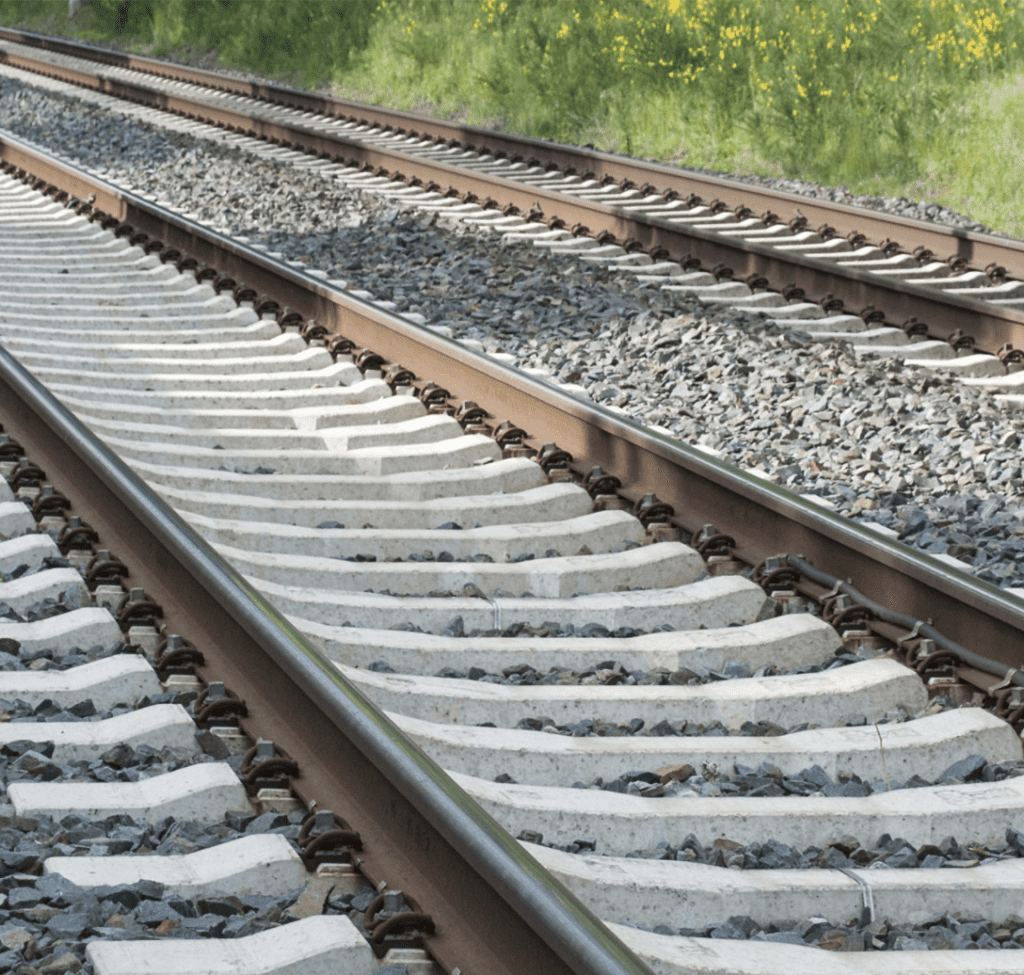Overhead Line Wires Tension Monitoring Opportunity

Connected Places Catapult and Network Rail are looking to the UK Overhead Railway Innovation community for technologies to detect the early signs of in-operation failure of contact wires on overhead line wires across the country’s rail network.

The purpose of this notice is to provide potential suppliers with an overview of the challenge and seek responses that explain the capabilities of products and solutions available in the marketplace, or near-market prototypes. All applicable solutions are sought and there is no presumption that respondents will have previous experience operating in a rail environment.
Please respond by on the link at the bottom of this page by 12:00hrs on 04 May 2020.
Overview
Network Rail (NR) is responsible for more than 20,000 miles of rail lines in the UK, of which around 40% is electrified. An annotated image of the overhead line environment is included in Figure 1 further down this page. The contact wire is designed to conduct electrical energy, and trains collect current from the overhead line through a pantograph (see Figure 2). The catenary wire supports the contact wire and holds it in place.
The catenary and contact wires are installed in lengths that are tensioned at either end in order to keep the contact wire still, so that a good contact with the pantograph is maintained. Both wires are tensioned with the tensions either being constant (auto tension) or varying with temperature (fixed termination). The contact wire is usually held at tensions in the range 8.2 – 15.5 kN (at 10-15 ⁰C ambient temperature).

The tensioned wires will generally be up to 1500m long, with support masts spaced up to 65m apart (see Figures 3 & 4. An overlap between the length of wires of up to 195m is needed in order to provide a continuous supply of electricity to the trains.
Fixed termination lines will expand during hot weather, reducing the tension in sections of the OLE environment. This can lead to a risk of passing trains damaging the contact wire, eventually leading to dewirements and significant delays to services on the network.
This project is focussed on reducing the in-operation failure of contact wires, by identifying methods of tension measurement of overhead lines which can be conducted without disruption to NR operations. If points of potential failure can be identified at an early stage, intervention and preventative maintenance can occur, for example NR can apply temporary speed restrictions to services in an affected region. This will increase the reliability of operations on the UK rail network, reduce maintenance costs, and provide safety benefits.
Status Quo
Currently, two main types of tension meter are used by Network Rail for measuring the overhead lines, a) in-line type tension meters, b) deflection type tension meters (see Figure 5). These inspection methods can currently only be applied during high level inspections. These inspections are conducted every 4-12 years, whereby maintenance staff take possession of the line, turn off the overhead power and inspect the overhead lines from an elevated platform.

Solution Requirements
NR are seeking innovative solutions to the challenge described above. Following the completion of the challenge process, NR wish to end up with a solution which will enable the in-service tension to be measured in overhead power lines which are rigidly connected at either end. In the ideal, the new solution will possess the following attributes:
Essential features:
- Measures tension in-situ i.e. without disassembly of the OLE environment.
- Provide timely results (i.e. measurement and analysis are rapid)
- Accurately measure tension of the OLE wires (preferably 3% error or lower)
- Non-intrusive and non-destructive measurement.
- Measures ambient temperature.
- Capable of taking measurements on all Fixed Termination wire runs and sections.
Desirable features:
- Measures contact wire temperature.
- Solution records tension and ambient temperature measurements into a log.
- Measurement logs are sent to a mobile devices or cloud platform.
- Solution automatically alerts operator to potential issues, based on thresholds.
- Error reporting for sensor.
- Solution provides automated continuous/regular monitoring of tension e.g. remote monitoring system.
Network Rail are interested in all types of solutions including, but not limited to, handheld point sensors, train mounted measurement systems, or low cost remote condition monitoring solutions that can repetitively monitor OLE tension.
Suppliers responding to this notice are also requested to provide details of measurement ranges and the sensitivity of their solution.
Network Rail has a long-term aspiration to remove the need for personnel to operate in the trackside environment. Solutions which demonstrate this capability will be considered favourably.
Requirements
You are requested to submit a response to the challenge statement identified. All responses are required to be completed within the Word template provided with this PIN (web link at the bottom of this page) and must not exceed 20 pages (excluding any supporting materials).
Your response should be received no later than 12:00hrs on 04 May 2020. Submissions after this date may not be reviewed.
All responses will be collated, and the information will be evaluated for us to have a clear understanding of potential development opportunities and the technical readiness of
possible solutions.
Following a review with NR, the Connected Places Catapult will advise all respondents of any next stages in the process.
See images on challenge statement attachment and to register your interest click here.














